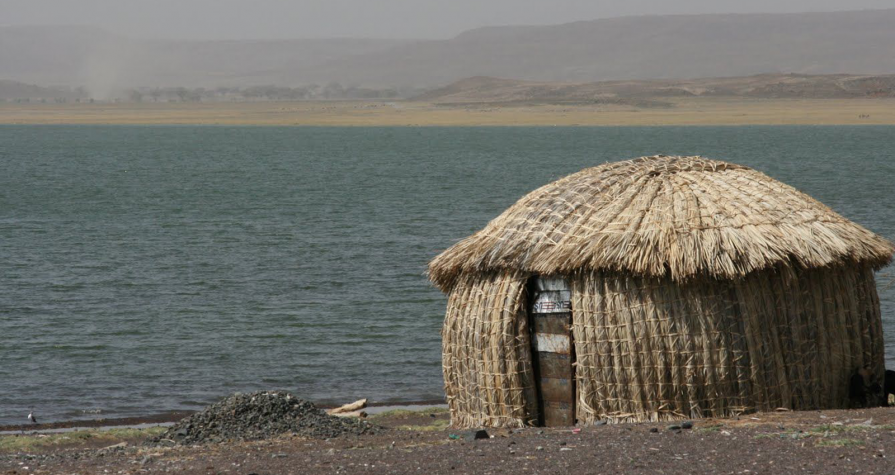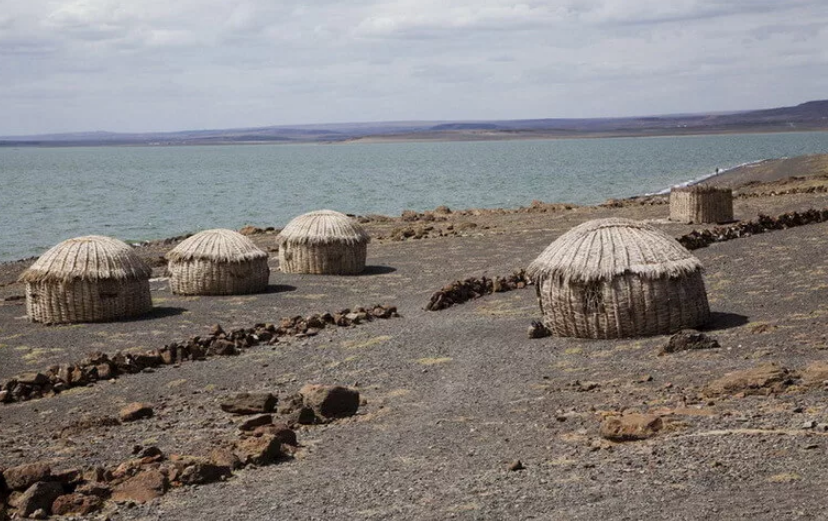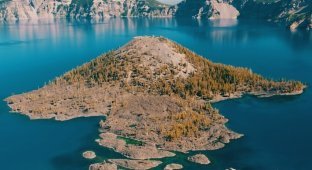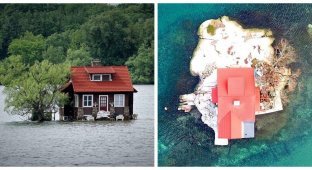A mysterious island in Kenya from which not a single person has ever returned (4 photos + 1 video)
It appeared as a result of the activity of local volcanoes, but this was in ancient times, and today the volcanic origin of the island is evidenced only by round cone-shaped hills, whose height exceeds three hundred meters. 
In the southeastern part of Lake Turkana (aka Rudolf) in Kenya is the island of Envaitenet, or, according to official maps, South Island.
There are several more islands on Lake Rudolf. It is not difficult to guess that where there is a south, there is a place for the north (the second island is called Northern). The third, very small rock, is called Crocodile Island. But it is the South Island that has the most impressive reputation: local inhabitants call it Envaitenet, which translated from one of the local dialects sounds like “Irreversible”. 
From time to time, human settlements appear on its territory, but, as a rule, this does not last long. The natives will be happy to tell exciting stories about this place. In their opinion, the life of the inhabitants of the island involves an uncompromising and brutal struggle with translucent creatures that, when attacked, cause paralysis in the victim. Other legends tell of terrifying monsters that snatch away those sleeping in the night. True, despite the insignificant dimensions of 5 by 11 kilometers, it is usually not possible to find the remains of missing people. 
The most ancient local legend tells how a family of refugees disappeared in these places, fleeing from the north from the raids of predatory slave traders who sold representatives of their people into slavery to Portuguese merchants selling “ebony”. When relatives arrived here a few months later, they found empty houses with simple utensils, personal belongings and even leftover food - but neither the owners, nor their mortal remains, nor signs of struggle that would indicate that the people were taken away by force, on the spot did not have.
Years later, the native Al-Molo tribe again attempted to find refuge on the island lands. They considered folklore, telling of secret enemies and elusive killers, to be nothing more than a fairy tale. And they made a mistake - not even a year had passed before the entire population of this place disappeared again, leaving behind their houses and belongings untouched.
In 1935, this strange and frightening place again had to face an invasion of strangers, this time by European scientists from an ethnographic expedition. Two of them, Michael Shaflis and Brian Dyson, landed on the island to research the al-Molo culture. To communicate with their comrades who remained on the mainland, they resorted to the help of signal lights. A few days later, the fires stopped burning, and a search party headed to the island. In vain: despite colossal efforts, it was not possible to find either the researchers or their numerous equipment. 
The native inhabitants believe that the guests of the island are destroyed by fate over and over again. One of the scientific theories gives a different reason. The thing is that toxic gases of volcanic origin are released from faults in the earth's crust. They cause temporary insanity in people and provoke hallucinations, driving them completely crazy. In such a state, a person can run somewhere or throw himself into the waters of a lake infested with crocodiles. Hence the reason for the disappearance of people. But where did the equipment of the ethnographic expedition go, by God, it’s not clear.
Residents of Kenya avoid visiting the South Island due to its specific reputation, but the holy place is never empty - feral goats have bred in huge numbers on a piece of land. Ghosts don't touch them.






























